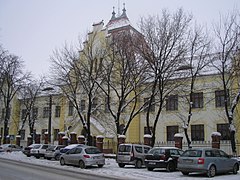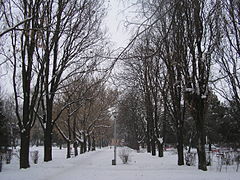Crișana

 Clash Royale CLAN TAG#URR8PPP
Clash Royale CLAN TAG#URR8PPP

Crișana region in Romania
Crișana (Hungarian: Körösvidék, German: Kreischgebiet) is a geographical and historical region in north-western Romania, named after the Criș (Körös) River and its three tributaries: the Crișul Alb, Crișul Negru, and Crișul Repede. In Romania, the term is sometimes extended to included areas beyond the border, in Hungary; in this interpretation, the region is bounded to the east by the Apuseni Mountains, to the south by the Mureș River, to the north by the Someș River, and to the west by the Tisza River, the Romanian-Hungarian border cutting it in two.[1][2] However, in Hungary, the area between the Tisza River and the Romanian border is usually known as Tiszántúl.
Part of a series on the |
|---|
| History of Romania |
 |
Prehistory
|
Antiquity
|
Middle Ages (Early)
|
Early Modern Times
|
National Awakening
|
Kingdom of Romania
|
Socialist Republic of Romania
|
Post-Revolution
|
By topic
|
By historical region
|
|
Contents
1 History
1.1 Ancient history
1.2 Middle Ages
1.3 Modern History
2 Geography
3 Cities
4 Gallery
5 See also
6 References
7 External links
History
Ancient history
In ancient times, this area was settled by Celts, Dacians, Sarmatians, and Germanic peoples. In the first century BC, it was part of the Dacian Kingdom under Burebista.
Middle Ages
In the Middle Ages, it was ruled by the Hunnic Empire, the Kingdom of the Gepids, the Avar Empire, the Bulgarian Empire and the Kingdom of Hungary.
Modern History
In the 16th-17th century, the region was divided between the Ottoman Empire and the Habsburg Monarchy. During Ottoman administration, the area was divided between Temeşvar Eyalet and the vassal Ottoman Principality of Transylvania. Within the Principality of Transylvania, the territory of Crișana was part of the area known as the Partium. Ottoman Varat Eyalet that was formed in the second half of the 17th century was centered on Crișana. Since the end of the 17th century, the whole region became part of the lands of the Habsburg Monarchy and was administratively divided between the Habsburg Kingdom of Hungary, the Habsburg Principality of Transylvania and the Habsburg Military Frontier.
Following the abolition of the Theiß-Muresch section of the Habsburg Military Frontier (in 1750) and the abolition of the Principality of Transylvania in 1867, the whole area was included again into the Kingdom of Hungary, which was then part of the dual monarchy of Austria-Hungary. During Habsburg administration, Crișana did not, on the whole, have special status such as that of Transylvania or the Banat; briefly, from 1850 to 1860, it was organized as the Military District of Großwardein. After disintegration of the Austro-Hungarian Empire in 1918, Crișana was divided between Romania (eastern part) and Hungary (western part).
Geography
Romanian Crișana is bounded in Romania by Maramureș to the north, Transylvania proper to the east, Banat to the south, and Hungary to the west. The region consists of the current Romanian counties of Arad (most of it), Bihor and some parts of Sălaj, Satu Mare, parts of Maramureș County (Codru, Chioar) and Hunedoara counties. Nowadays it is sometimes considered part of the historical region Transylvania, although it did not fall fully within the boundaries of the historical principality.
Hungarian Körösvidék is covered by the areas of Hajdú-Bihar County and Békés County. The southern part of Crișana, near the Mureș River, was called Pomorišje by the Serbs.
Cities
The most important cities are:
Oradea, Arad, Salonta, and Beiuș (in Romania)
Debrecen, Békéscsaba, and Gyula (in Hungary)
Gallery

Arad - Orthodox Cathedral

Arad - Ioan Slavici - Classic Theatre
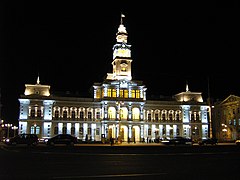
Arad - Administration Palace
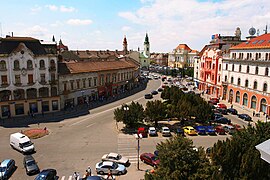
Oradea - The Ferdinand Square

Oradea - The Faculty of Medicine
Oradea - The Black Eagle Palace
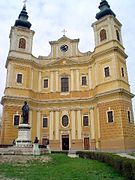
Oradea - Baroque Roman Catholic cathedral

Oradea - The Crişul Repede river
Salonta - Reformed Cathedral
Salonta - Orthodox Church
Salonta - Arany Janos High School
Salonta - The central park
Salonta - Train monument and the railway station
Salonta - The Peasantry Museum
Salonta - Consulate of Slovakia

Wooden church in Brădet
See also
- Partium
References
^ Boia, Lucian (2001-01-01). Romania: Borderland of Europe. Reaktion Books. ISBN 9781861891037..mw-parser-output cite.citationfont-style:inherit.mw-parser-output .citation qquotes:"""""""'""'".mw-parser-output .citation .cs1-lock-free abackground:url("//upload.wikimedia.org/wikipedia/commons/thumb/6/65/Lock-green.svg/9px-Lock-green.svg.png")no-repeat;background-position:right .1em center.mw-parser-output .citation .cs1-lock-limited a,.mw-parser-output .citation .cs1-lock-registration abackground:url("//upload.wikimedia.org/wikipedia/commons/thumb/d/d6/Lock-gray-alt-2.svg/9px-Lock-gray-alt-2.svg.png")no-repeat;background-position:right .1em center.mw-parser-output .citation .cs1-lock-subscription abackground:url("//upload.wikimedia.org/wikipedia/commons/thumb/a/aa/Lock-red-alt-2.svg/9px-Lock-red-alt-2.svg.png")no-repeat;background-position:right .1em center.mw-parser-output .cs1-subscription,.mw-parser-output .cs1-registrationcolor:#555.mw-parser-output .cs1-subscription span,.mw-parser-output .cs1-registration spanborder-bottom:1px dotted;cursor:help.mw-parser-output .cs1-ws-icon abackground:url("//upload.wikimedia.org/wikipedia/commons/thumb/4/4c/Wikisource-logo.svg/12px-Wikisource-logo.svg.png")no-repeat;background-position:right .1em center.mw-parser-output code.cs1-codecolor:inherit;background:inherit;border:inherit;padding:inherit.mw-parser-output .cs1-hidden-errordisplay:none;font-size:100%.mw-parser-output .cs1-visible-errorfont-size:100%.mw-parser-output .cs1-maintdisplay:none;color:#33aa33;margin-left:0.3em.mw-parser-output .cs1-subscription,.mw-parser-output .cs1-registration,.mw-parser-output .cs1-formatfont-size:95%.mw-parser-output .cs1-kern-left,.mw-parser-output .cs1-kern-wl-leftpadding-left:0.2em.mw-parser-output .cs1-kern-right,.mw-parser-output .cs1-kern-wl-rightpadding-right:0.2em
^ White, George W. (2000-01-01). Nationalism and Territory: Constructing Group Identity in Southeastern Europe. Rowman & Littlefield. ISBN 9780847698097.
External links
| Wikimedia Commons has media related to Crișana. |










